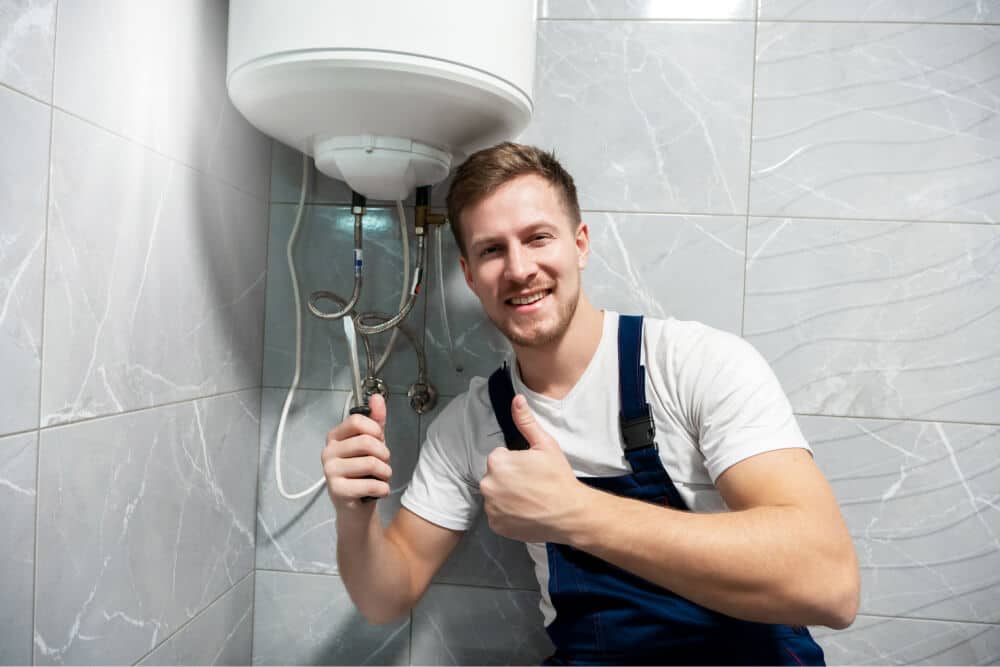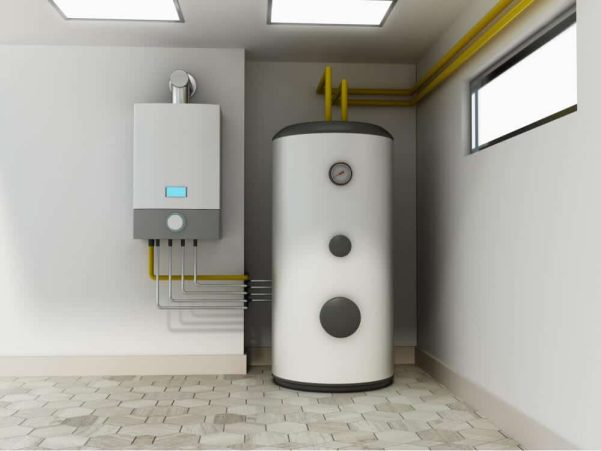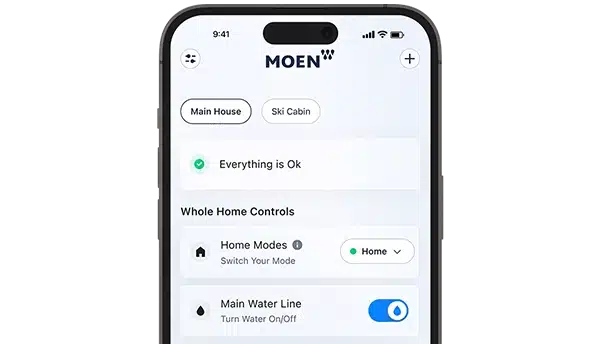Running out of hot water is never a pleasant experience. The good news is, so long as your water heater is appropriately sized for your home and you properly maintain your water heater throughout the year, this isn’t something that should happen to you very often. What’s the proper way to maintain a water heater so that it runs smoothly year after year? Keep reading to get tips from our experts in water heater replacement and residential water leak detection in Central Valley, CA.
Water Heater Maintenance Tips
Make Sure It’s Set to the Right Temperature
Scalding hot water is just bad for your home all around! If you’ve never checked the thermostat on your water heater, this is one of the first things that you should do. Many manufacturers will set the temperature default to 140 degrees Fahrenheit. This is much hotter than is necessary for a residential property. Not only does that high temperature increase the risk of scalding (especially if you have young children or elderly individuals in your home), but it can also accelerate mineral buildup in your water heater tank and speed up corrosion in your pipes.
So, check the thermostat on the water heater to see what it’s set at. It should be no higher than 120 degrees Fahrenheit. This is plenty hot enough for all of your showering, dishwashing, and laundry needs and is safer for your water heater, pipes, and family members.
Check the Pressure Relief Valve
It’s also important to make sure that the pressure relief valve on your water tank is functioning properly. This valve, as the name implies, helps relieve excess pressure buildup in the tank; if it’s not functioning properly, you risk having your tank crack or completely burst from pressure buildup.
To check the pressure relief valve, you should first ensure that the water heater is turned off. If you have a gas water heater, turn the gas valve to the off position; for electric water heaters, switch off the circuit breaker that connects to the water heater. Next, place a bucket under the end opening of the pressure release valve line. Then, flip the valve to see if it releases water as it should. There should be a steady stream that releases about 2 cups of water. Do this a few times to make sure it’s working properly. Remember, this water will be hot, so take care not to touch the water and burn yourself! If the pressure valve is not releasing water, you might need to replace that part or replace your water heater altogether.
Flush Your Water Heater
This is a maintenance task you’ll want to perform regularly, usually at least once a year. Flushing the water heater can help to reduce sediment buildup, which can impact your water heater’s performance. A buildup of sediment in your water heater’s tank can actually reduce the amount of water that it can heat; the sediment creates a hard layer at the bottom of the tank, thereby diminishing the tank’s size. This means less hot water for your home. Additionally, that layer of sediment creates a barrier between the water and the heating elements, so the water may not get as hot as it should, further impacting your hot water supply. By flushing your tank regularly, you can ensure your tank has as much space as possible for your hot water supply and that it can perform its job efficiently.
To flush your water heater tank, ensure it’s turned off (see above), then connect a hose to the faucet-like outlet on the tank’s exterior. Open the valve to drain the tank, closing it off every gallon or 2 for best results. Drain the tank, and repeat the process until clean water comes out of the hose. Another option is to only release 2 or 3 gallons of water from the tank and perform this task roughly every four months rather than fully draining the tank once a year.
In addition to keeping your water heater as efficient as possible, flushing your tank of sediment buildup also protects the tank itself. That buildup can increase the rate of corrosion, which means you’ll need a water heater replacement much sooner. Though it might pain you to waste that heated water, in the long run, regularly flushing the water heater will save you money.
Check the Anode Rod
The anode rod helps slow down corrosion and rust in the water heater tank, so it must function properly. To check the anode rod’s performance, first, place a hose on the tank’s drain cock and release a few gallons of water. Then, fit a socket onto the rod’s hex head on top of the heater and unscrew the rod. It will need to be replaced if it’s under ½ an inch thick or if you notice that it’s coated in calcium buildup.
Insulate the Tank and Pipes
One of the best ways to maintain your water heater is to help it run efficiently. Many of the tips above help with this (such as flushing the heater), but one important step that many people overlook is insulating both the tank and the pipes connected to the water heater. Insulating the tank slows the heat loss so that the water heater doesn’t have to click on it as often to maintain that temperature. Tanked water heaters have to constantly maintain the temperature of the water in the tank, even if the hot water isn’t being used.
If you follow these maintenance tips, your water heater should last you a decade, give or take a couple of years. However, eventually, every water heater will need to be replaced. If you’re looking for a more efficient, reliable source of hot water, consider a tankless water heater. Central Valley Bullseye Leak Detection can replace your leaky water heater or, if your water heater isn’t the source of the leak, provide you with expert leak detection and basement leak repair in Central Valley, CA. Contact us today to schedule an appointment.






